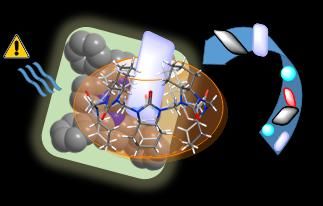Developing an optical methodology for rapid detection of COVID-19
The new tool has made it possible to detect SARS-CoV-2 in exudate from symptomatic patients with a sensitivity of 100% and a specificity of 87.5%
This new methodology, whose first results are published in Scientific Reports, has obtained a sensitivity of 100% and a specificity of 87.5% in the detection of SARS-CoV-2 in nasopharyngeal exudate (the same samples used in a PCR test) from symptomatic people. It has also been possible to detect the presence of SARS-CoV-2 in fresh saliva of asymptomatic people, as well as to detect, differentiate and quantify two types of synthetic viruses (lentiviruses and synthetic coronaviruses) in two biofluids (saline solution and artificial saliva). The main advantage of this new technology over PCR lies in the speed of sample processing and the ability of the optical system to simultaneously analyze a large number of samples.

Mobile security cabin for handling biological samples developed in the C-CLEAN Project, installed in the laboratory-truck of the EOD-CBRN Specialty of the Spanish National Police.
Universidad de Sevilla
The authors of the study warn that these results should still be viewed with caution, as they constitute a 'proof of concept', with relatively small numbers of cases, under partially controlled laboratory conditions. For this reason, they are currently working on validating this new methodology under generic conditions, including new variants of the virus and the effects of vaccines.
This new methodology allows for the detection of viruses in liquid droplets and dry residues deposited on surfaces, through hyperspectral imaging and data processing based on advanced statistics and artificial intelligence. It allows rapid processing of multiple samples simultaneously, without contact or reagents and with relatively simple equipment, usable by personnel with minimal training. This new technique uses standard optical equipment and has been developed so that it can be implemented in resource-constrained settings. The technique has been patented and the authors are studying various options to set it up quickly and affordably.
The method and its implementation were designed by Prof. Emilio Gomez-Gonzalez, Principal Investigator of the Project and Professor of Applied Physics at the ETSI Engineering School of the University of Seville, where he directs its Group of Interdisciplinary Physics (GFI), researcher at the Group of Applied Neuroscience of the Institute of Biomedicine of Seville (IBIS) and collaborator of the HUMAINT Project of the JRC.
The C-CLEAN Project has been carried out by more than 30 researchers of 11 Spanish institutions, with a strong Andalusian component and European support.
Original publication

Get the analytics and lab tech industry in your inbox
By submitting this form you agree that LUMITOS AG will send you the newsletter(s) selected above by email. Your data will not be passed on to third parties. Your data will be stored and processed in accordance with our data protection regulations. LUMITOS may contact you by email for the purpose of advertising or market and opinion surveys. You can revoke your consent at any time without giving reasons to LUMITOS AG, Ernst-Augustin-Str. 2, 12489 Berlin, Germany or by e-mail at revoke@lumitos.com with effect for the future. In addition, each email contains a link to unsubscribe from the corresponding newsletter.



























































